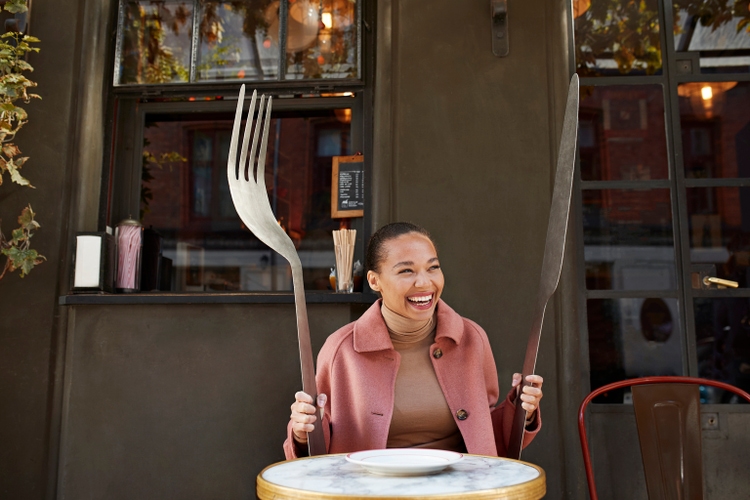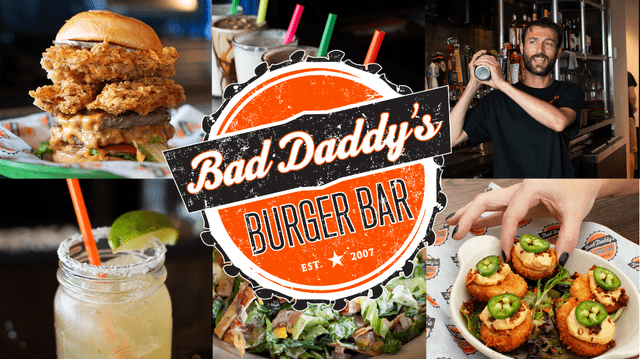
Plenty of restaurant stocks have experienced a volatile past two years as impacts from the Covid-19 pandemic work their way through labor markets and the supply chain. Today I want to examine a stock trading near a multi-year low but with surprisingly strong fundamentals.
Good Times Restaurants (NASDAQ:GTIM) finds themselves at an interesting crossroads with two operating chains: Good Times Burgers & Frozen Custard, and Bad Daddy’s Burger Bar. Bad Daddy’s had a much harder time during the pandemic than the fast-casual Good Times (i.e. Q3-20 same store sales (SSS) for Good Times restaurants increased 11.9% and for Bad Daddy’s restaurants decreased 36.7%). The balance between the two chains helped the company tread water better than some peers, though Bad Daddy’s made up a much larger portion of historic sales.
Recent Results

Good Times IR Site
GTIM posted Q3 results recently with $36.5m revenue and $1.7m of Adjusted EBITDA ($103.0m and $4.0m year-to-date). In addition, they have $9.7m cash, and cash from operations inflected strongly back above $3m for the quarter after a small decrease in Q1 and positive $1.5m in Q2. Not bad for a $27m market cap ($17m Enterprise Value). 3rd quarter SSS were positive, though slightly negative for both concepts once adjusting for Y/Y price increases (8.2% for Good Times and 6.8% for Bad Daddy’s).
Comps

Bad Daddys (Bad Daddy’s Website)
Bad Daddy’s are generally 3.5-4k square feet and do $550-700 sales/sq. ft. (lower end due to Covid) at 39 locations ($2.4m average AUM in FY21). Good Times concepts can be around 1k sq. ft. (double drive thru) or 2k sq. ft. if they have a dining room and average $1.2-$1.3m in sales each of the last two years (32 total locations). There is some upside here, as per their Q2-22 call, “over 20% of our restaurants at Bad Daddy’s with a full year of operating history, exceeding $3 million volumes and two restaurants continuing to exceed $4 million annual volumes on a last 12-month basis.”
BBQ Holdings (BBQ) is probably the best recently public comp for Bad Daddy’s in terms of restaurant size and sales ($2.2-2.5m). BBQ made $206m of FY21 revenue, $17.4m EBITDA, and $7.0m net income. MTY Food (OTCPK:MTYFF) recently announced a deal to take them private at a $200m transaction value:
“As of Aug. 9, 2022, BBQ operates 200+ franchised and 100+ corporate-owned restaurants; for FY22 ending Jan. 1, 2023, the company is expected to generate 12-month run-rate system sales and cash EBITDA between $685M to $725M and $25.5M and $27.5M, respectively.
With this Transaction, MTY will add leading restaurant brands to its network which will reach a total of ~7K locations, including 3.9K+ in U.S.
The transaction is expected to be immediately accretive to MTY’s free cash flow per share; transaction represents a 7.5x multiple of BBQ mid-point FY2022E run-rate cash EBITDA guidance of $26.5M.”
Fiesta Restaurant Group (FRGI) carries a ~$150m EV against $357m of FY21 revenues and $25m of adjusted EBITDA (6x EBITDA), but with negative free cash flow. The restaurant size and metrics are fairly comparable to Bad Daddy’s albeit with lower quality food. The brand recently streamlined around Pollo Tropical after divesting Taco Cabana.
Valuation
The above suggests 6x EBITDA is a reasonable trailing valuation, implying current inflationary pressures will result in lower earnings. GTIM nevertheless reported $9.5m of calendar 2021 EBITDA, pricing them at less than 2x EBITDA. YTD Q3-22, adjusted EBITDA has been $4.0m (3.2x annualized EBITDA), with the company citing cost pressures from food and labor inflation as the primary headwinds.
Another attractive way to look at the valuation is to focus on the Bad Daddy’s locations, assuming the Good Times location recovery was Covid-driven and transitory. We will define Bad Daddy’s FCF as:
Sales less Restaurant Opex less advertising plus D&A less maintenance CapEx less allocated SG&A.
- FY18: $67.4m-61.6m-0.6m+2.8m-$0.4m-5.5m = $2.1m
- FY19: $79.8m-72.7-0.8+3.4-0.4-7.7 = $1.6m
- FY20: $76.3m-69.8-0.8+3.3-0.3-5.8 = $2.9m
- FY21: $88.6m-77.6-0.8+3.1-0.8-7.1 = $5.4m
- YTD Q3-22: $77.2m-66.8 (Includes D&A)-1.2-0.9-5.0 (est) = $3.3m ($4.4m annualized)
Note – 9 Bad Daddy’s locations were opened in FY18 and 4 in FY19 – of the total $7.0m CapEx in FY19, $6.6m was opening new locations, and $9.7m of the $10.1m in FY18 related to new restaurants. FY21 had $1.9m of growth CapEx, and FY20 had $2.0m. I have removed the growth expenditure above to provide a run-rate picture of their cash flow quality.
It appears with the new openings maturing, the concept should generate ~$5m in cash flow after $1m in maintenance CapEx and historic corporate overhead (which is likely conservative, especially for a larger acquirer that would have better scale and less public burden). At the current EV, $5m is a 29% yield, and that’s assigning no value to the Good Times segment. Nevertheless, GTIM is likely too small to remain public indefinitely and Bad Daddy’s is likely worth far more than the current EV.
Other Considerations
Management has indicated on recent calls they have been thoughtful with price increases and have used recent market movements to hike prices more slowly than peers. The result has been beating Black Box benchmarks in recent quarters, and moving to a more competitive level of pricing:
“When we look at competitors specific to Bad Daddy’s, specifically boutique burger concepts with chef-inspired menus, we believe we have taken less price increase in our markets compared to those competitors. Whereas pre-pandemic, we were generally the highest priced among these chef-driven craft burger concepts. We’re now just above the median among that same group.”
Last year GTIM attempted a tender for 1.4m shares at $4.60/share, and was significantly undersubscribed. The unused portion of the tender would now be enough to buy back over 15% of outstanding shares. The trading action around the tender serves as an interesting data point that there may not be many holders willing to sell under $5, providing some torque in the event the business starts to recover. In FY22 to date, the company bought back almost 200k shares, a further vote of confidence in the business. $4.4m remains authorized as of Jun-22.
For a small operator, the quality of GTIM management is also respectable. Director Charles Jobson formerly ran a multi-billion hedge fund, and recently retired Robert Stetson (replaced by daughter-in-law Jennifer) previously founded US Restaurant Properties. Both took issue with the company in 2018 and forced changes for better shareholder alignment, and ultimately brought in their current CEO to run the business. Zink’s performance after starting at the beginning of the pandemic has been impressive. The two men own over 20% of outstanding shares, and are joined on the board by the President of Baskin Robbins – Jason Maceda, and Geoff Bailey, a former Arby’s franchisor who sold his 47 units in 2013.
Future Growth
I don’t like giving too much credit for growth possibilities, but I think it’s worth evaluating where GTIM could sit by 2025 if they resume a pace of 5 new Bad Daddy locations per year (FY23-FY25). Assumptions:
- $1.5m new unit costs, or $7.5m per year.
- GTIM cash flow of $5m per year before growth expenditure.
- With 55 units in FY25 @ $2.5m annual sales and a 7% FCF margin, Bad Daddy’s could reach $10m annual FCF.
- Adjusting the EV for $22.5m of growth CapEx and $15m of FCF in the interim would still leave investors with a ~$25m EV, pushing Bad Daddy’s FCF yield near 40% at the current share price.
Risks
- Aforementioned inflationary pressures loom large. The legacy Good Times concept experienced revenue declines in 2009 and 2010 that squeezed margins, also suggesting some susceptibility to a recession. However, cash from operations never dipped under -$1m in a year, and CapEx was dialed down to less than $1m in FY09-FY12 combined. Therefore, I expect any pressure from a recession can be well-managed by the strong balance sheet.
- GTIM is a microcap with limit volume. There are risks of significant price fluctuation, limited entry and exit volume, and minimal coverage of the stock.
- GTIM had a deal in place to sell their drive thru locations in 2019 for $8m in cash and a $2m loan. The deal fell apart after management tried to increase the price to $11m. If you assume $10m to still be a fair value for the segment, it pushes the Bad Daddy’s concept near 100% FCF yield on the remaining EV.
- GTIM has accrued $332k in potential damages for the drive thru lawsuit, which began trial on August 22nd. A successful outcome for GTIM should remove an overhang on the shares, whereas a loss may result in a material claim. Given their significant cash balance, I expect this could be absorbed without too much damage being done to the business.
Conclusion
Good Times Restaurants appears cheap compared to peers, while having strong underlying cash flow characteristics in their Bad Daddy’s segment. Given Management has explored selling the Good Times segment in the past, shareholders may be optimistic that Management recognizes that being public as such a small business is not necessarily worth their while, and may seek to monetize their assets soon. I believe shares represent an attractive value around $2 and could rebound sharply when inflationary pressures ease.


Be the first to comment